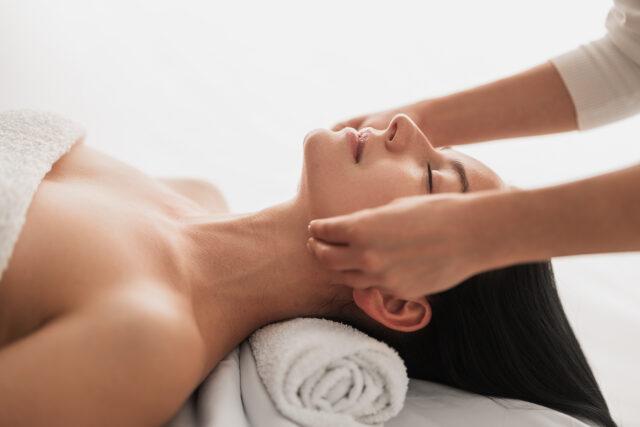 The Healing Power of Touch – Touch is a fundamental aspect of human existence. From the gentle embrace of a loved one to the soothing sensation of a massage therapist’s skilled hands, touch plays a pivotal role in our lives. Beyond the emotional and sensory experiences, touch has a profound impact on our overall health and well-being. In this blog post, we will delve into the importance and effects of touch on our physical, mental, and emotional health.
The Healing Power of Touch – Touch is a fundamental aspect of human existence. From the gentle embrace of a loved one to the soothing sensation of a massage therapist’s skilled hands, touch plays a pivotal role in our lives. Beyond the emotional and sensory experiences, touch has a profound impact on our overall health and well-being. In this blog post, we will delve into the importance and effects of touch on our physical, mental, and emotional health.
The Science of Touch
To understand the significance of touch, it’s essential to explore the science behind it. Our skin is our body’s largest organ, densely populated with millions of sensory receptors that transmit information to the brain. These receptors come in various forms, each specializing in a specific type of touch sensation. For instance, there are receptors for pressure, temperature, pain, and gentle caresses.
When we experience touch, these receptors send signals to the brain, which processes them in the somatosensory cortex. This intricate network of nerve cells helps us interpret and respond to touch in various ways. This scientific foundation demonstrates that touch is not just a pleasurable experience but a critical element of our physiological and psychological health.
The Healing Power of Touch
Stress Reduction
One of the most well-documented effects of touch is its ability to reduce stress. When we are touched in a comforting or reassuring manner, our bodies release oxytocin, often referred to as the “love hormone” or “cuddle chemical.” Oxytocin promotes feelings of trust, bonding, and relaxation, counteracting the stress hormone cortisol.
Pain Management
Touch therapy, such as massage, acupuncture, and acupressure, has long been used to alleviate physical pain. These therapies stimulate the release of endorphins, natural painkillers produced by the body. Additionally, they improve blood circulation, which can reduce inflammation and promote healing.
Immune System Support
Research has shown that regular, positive touch can enhance the immune system’s functioning. The stress-reducing effects of touch, coupled with the release of immune-boosting hormones, can lead to improved resistance to illness.
Mental Health Benefits
The effects of touch extend to mental health as well. Touch has been linked to increased feelings of self-worth and reduced symptoms of anxiety and depression. Physical touch can provide a sense of comfort and connection, reducing feelings of loneliness and isolation, which are common contributors to mental health issues.
Improved Sleep
For those struggling with sleep disorders, touch can be a natural remedy. Gentle, soothing touches release melatonin, the hormone responsible for regulating sleep patterns. This can lead to better sleep quality and an increased overall sense of well-being.
Enhanced Bonding and Relationships
Touch is a primary means of communication and bonding in human relationships. Whether it’s a hug, a handshake, or a loving pat on the back, physical touch fosters a sense of trust and connection between individuals. In romantic relationships, regular physical touch has been associated with increased relationship satisfaction and longevity.
Emotional Regulation
When we are touched, especially in a loving and supportive manner, it has a remarkable effect on our emotional state. Touch can help calm heightened emotions, soothe anxiety, and offer a sense of security during times of distress.
Cultural and Individual Differences
It’s important to note that the significance of touch can vary across cultures and individuals. Cultural norms, personal boundaries, and past experiences all influence how people perceive and respond to touch. While some cultures may encourage more physical contact as a form of social bonding, others may have stricter boundaries around touch. It’s essential to respect these differences and always obtain consent when engaging in physical contact.
Practical Ways to Incorporate Healthy Touch
Hugging: Embrace loved ones with genuine hugs to release oxytocin and strengthen emotional bonds.
Massage Therapy: Consider regular massages to reduce stress, alleviate physical discomfort, and promote relaxation.
Cuddle Time: Spend quality time cuddling with your partner, children, or pets to foster connection and emotional well-being.
Self-Care: Don’t forget self-touch. Self-massage, taking relaxing baths, or practicing self-hugging can be comforting and beneficial.
Mindful Touch: Engage in mindfulness practices that involve touch, such as yoga or tai chi, to connect with your body and reduce stress.
Social Connections: Maintain strong social connections with friends and family to ensure regular opportunities for positive touch.
Conclusion
In a fast-paced, digitally connected world, the importance of touch on overall health cannot be overstated. It is a powerful tool for reducing stress, managing pain, supporting the immune system, and enhancing emotional well-being. From the cradle to the nursing home, humans have an innate need for physical touch, and acknowledging and prioritizing this need can lead to a happier, healthier life.
As we navigate the challenges of modern life, let us remember the profound effects of touch and make a conscious effort to incorporate it into our daily routines. By doing so, we can nurture our physical, mental, and emotional well-being and experience the healing power of touch to its fullest extent.

Workplace Massage: Boosting Productivity and Employee Satisfaction
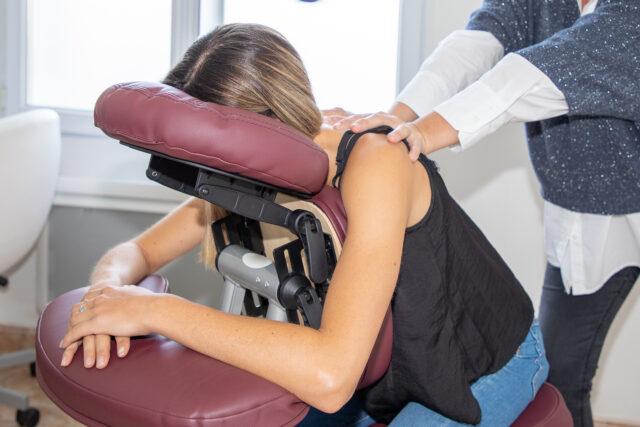 In today’s fast-paced work environments, employee well-being has become a top priority for organizations aiming to create a positive and productive workplace culture. One increasingly popular method to promote workplace wellness is through massage therapy. In this blog post, we will explore how incorporating massage into the workplace can lead to happier, healthier, and more engaged employees.
In today’s fast-paced work environments, employee well-being has become a top priority for organizations aiming to create a positive and productive workplace culture. One increasingly popular method to promote workplace wellness is through massage therapy. In this blog post, we will explore how incorporating massage into the workplace can lead to happier, healthier, and more engaged employees.
- The Impact of Workplace Stress: Workplace stress is a pervasive issue that can negatively affect employees’ mental and physical well-being. High stress levels lead to decreased productivity, increased absenteeism, and a higher risk of burnout. By offering massage as a workplace wellness program, employers can provide employees with a valuable stress management tool.
- Benefits of Workplace Massage: a. Stress Reduction: Massage helps to alleviate stress by reducing cortisol levels and promoting the release of endorphins, the body’s natural feel-good hormones. Regular massage sessions can help employees manage stress more effectively and maintain a sense of calm and balance throughout the workday. b. Pain Relief: Many employees suffer from musculoskeletal issues and chronic pain due to prolonged sitting, repetitive tasks, or poor posture. Massage therapy can target these specific areas, relieving tension, improving circulation, and reducing pain. c. Improved Focus and Mental Clarity: Massage promotes relaxation and mental clarity, which can enhance cognitive function and concentration. Employees who receive regular massages are more likely to stay focused, make better decisions, and perform at their best. d. Enhanced Mood and Morale: Massage triggers the release of serotonin and dopamine, neurotransmitters associated with happiness and positive mood. By incorporating massage into the workplace, employers can create an atmosphere of well-being, boosting employee morale and job satisfaction.
- Different Approaches to Workplace Massage: a. On-Site Chair Massage: Chair massage is a convenient and efficient option for the workplace. It involves a brief, seated massage that focuses on the neck, shoulders, back, arms, and hands. On-site chair massage sessions typically last between 10 to 30 minutes and can be scheduled during breaks or as part of wellness events. b. Wellness Rooms: Creating dedicated wellness rooms within the workplace provides employees with a quiet, comfortable space where they can receive longer massage sessions or engage in relaxation exercises. These rooms can be equipped with massage tables, relaxing music, and essential oils to enhance the overall experience. c. Wellness Programs and Subsidies: Employers can partner with local massage therapists or wellness centers to offer discounted or subsidized massage sessions for employees. By providing financial incentives or flexible schedules to accommodate massage appointments, employers demonstrate their commitment to employee well-being.
- Implementing a Workplace Massage Program: a. Management Buy-In: To successfully introduce a workplace massage program, it’s crucial to obtain support from management and stakeholders. Highlight the potential benefits, present case studies, and emphasize the positive impact on employee satisfaction, retention, and productivity. b. Partnering with Professionals: Collaborate with licensed and experienced massage therapists or wellness providers who specialize in workplace programs. Ensure they understand the unique needs of office environments and are capable of delivering quality services. c. Communication and Promotion: Proper communication is key to the success of any workplace wellness initiative. Use various channels, such as emails, newsletters, posters, and intranet platforms, to inform employees about the availability and benefits of the massage program. Highlight success stories and encourage employee feedback to create a buzz and generate interest. d. Evaluation and Feedback: Continuously evaluate the effectiveness of the program through employee surveys, feedback sessions, and productivity metrics. Adjust the program as needed based on employee preferences and needs.
Massage therapy is a powerful tool for promoting workplace wellness and improving employee satisfaction and productivity. By addressing stress, reducing pain, enhancing focus, and boosting morale, workplace massage programs have the potential to transform the work environment into a healthier, happier, and more efficient space. Employers who invest in the well-being of their employees through massage initiatives demonstrate their commitment to fostering a positive work culture. By incorporating massage into the workplace, organizations can unlock the full potential of their workforce and reap the long-term benefits of a more engaged and productive team.

Enhancing Mental Health with Massage Therapy
 Introduction:
Introduction:
In today’s fast-paced and stress-filled world, finding effective ways to support our mental health is crucial. While many of us are aware of traditional methods like therapy and meditation, there’s one often underrated practice that holds immense potential in improving mental well-being: massage therapy. Beyond its reputation as a mere luxury or relaxation technique, massage offers a myriad of benefits that can profoundly impact our mental health. In this comprehensive blog post, we will delve into the profound effects of massage on mental well-being, exploring specific conditions and mechanisms through which massage therapy can enhance our mental health and overall quality of life.
Alleviating Stress and Anxiety:
Stress and anxiety have become all too common in our modern lives, but massage therapy can serve as a powerful antidote. Through the skillful manipulation of soft tissues and application of various techniques, massage promotes deep relaxation, allowing the body and mind to unwind. This process triggers the parasympathetic nervous system, reducing heart rate, blood pressure, and the production of stress hormones like cortisol. As a result, individuals experience a state of calm and tranquility, relieving the burdens of stress and anxiety.
Massage therapy has been the subject of numerous studies exploring its effects on stress and anxiety reduction. For instance, a study published in the Journal of Clinical Psychology demonstrated that massage therapy significantly decreased symptoms of anxiety and stress in individuals with generalized anxiety disorder. Another study published in the International Journal of Neuroscience found that massage therapy decreased cortisol levels while increasing levels of serotonin and dopamine, neurotransmitters associated with feelings of well-being and happiness.
Easing Symptoms of Depression:
Depression is a complex mental health condition that affects millions of people worldwide. Massage therapy can be a valuable complementary approach in managing and alleviating depressive symptoms. The nurturing touch and soothing movements of massage stimulate the release of endorphins, which are natural mood-elevating chemicals in the brain. Moreover, massage enhances the circulation of blood and lymph, facilitating the delivery of nutrients and oxygen to tissues while removing waste products, thus supporting the body’s natural healing processes. Regular massage sessions can contribute to improved mood, increased self-esteem, and a sense of overall well-being.
Research has shown promising results regarding the effects of massage therapy on depression. A meta-analysis published in the Journal of Clinical Psychiatry reviewed multiple studies and concluded that massage therapy significantly reduced symptoms of depression across various populations. The studies indicated that massage therapy improved overall mood, reduced feelings of sadness and hopelessness, and increased the sense of relaxation and well-being in individuals with depression.
Enhancing Sleep Quality:
Sleep plays a vital role in mental health, and massage therapy can significantly improve sleep quality. By reducing muscle tension, promoting relaxation, and lowering stress levels, massage creates an ideal environment for a restful sleep. The manipulation of soft tissues triggers the release of serotonin, a neurotransmitter associated with relaxation and sleep regulation. Additionally, massage stimulates the production of melatonin, a hormone that helps regulate sleep-wake cycles. These combined effects lead to more profound and uninterrupted sleep, allowing individuals to wake up feeling refreshed and mentally rejuvenated.
Several studies have explored the relationship between massage therapy and sleep quality. A study published in the Journal of Alternative and Complementary Medicine found that massage therapy improved sleep quality in postmenopausal women by reducing symptoms of insomnia and increasing sleep efficiency. Another study published in the Journal of Clinical Rheumatology reported that massage therapy improved both sleep quality and duration in individuals with fibromyalgia, a condition often characterized by sleep disturbances.
Cultivating Self-awareness and Mindfulness:
In our increasingly disconnected and fast-paced world, massage provides a unique opportunity to cultivate self-awareness and mindfulness. As the massage therapist’s skilled hands move across the body, individuals are encouraged to focus on physical sensations and engage in deep introspection. The meditative nature of massage helps individuals become more attuned to their bodies, emotions, and thoughts, fostering a sense of present-moment awareness. Through this process, massage can serve as a gateway to practicing mindfulness, both during the session and in everyday life, empowering individuals to manage stress, reduce rumination, and enhance overall emotional well-being.
Numerous studies have highlighted the link between massage therapy and mindfulness. A study published in the Journal of Bodywork and Movement Therapies found that individuals who received massage therapy reported increased mindfulness and a greater ability to connect with their bodies. The researchers suggested that massage therapy helped individuals become more present, enhancing body awareness and promoting a sense of overall well-being.
Facilitating Emotional Release and Healing:
Unresolved emotions and trauma can manifest as physical tension and discomfort within the body. Massage therapy can act as a catalyst for emotional release and healing. By applying targeted pressure and working on specific areas of the body, massage can release stored tension and facilitate the release of trapped emotions. This process provides individuals with a safe and supportive environment to acknowledge, process, and release emotional blockages. The emotional release experienced during massage can be cathartic, leading to a greater sense of emotional well-being, improved self-expression, and an increased capacity for resilience.
Research on the emotional benefits of massage therapy is growing. A study published in the Journal of Bodywork and Movement Therapies explored the experiences of individuals receiving massage therapy and found that it helped them connect with and release emotions stored within their bodies. Participants reported feeling lighter, more relaxed, and emotionally balanced following their sessions. Additionally, massage therapy has been integrated into trauma-informed care approaches, demonstrating its effectiveness in supporting trauma survivors in their healing journey.
Conclusion:
In a world where mental health concerns are increasingly prevalent, exploring holistic approaches to support our well-being is paramount. Massage therapy offers a transformative and natural method for improving mental health and enhancing overall quality of life. From alleviating stress and anxiety to easing symptoms of depression, enhancing sleep quality, cultivating self-awareness and mindfulness, and facilitating emotional release, the effects of massage extend far beyond relaxation. By incorporating massage into our self-care routines, we can unlock the transformative power it holds and take significant strides towards achieving optimal mental health.

Lupus & Massage Therapy
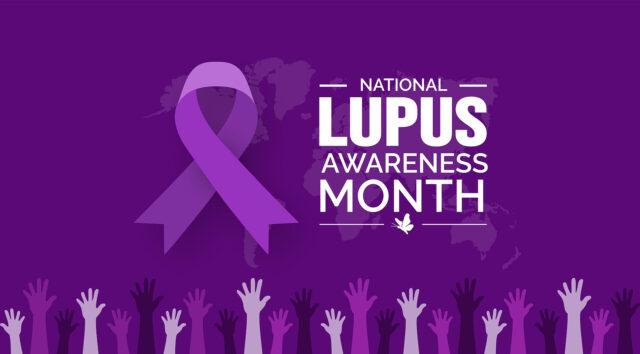 Lupus, also known as Systemic Lupus Erythematosus (SLE), is a chronic autoimmune disease that can affect various parts of the body, including the skin, joints, kidneys, heart, and lungs. The condition occurs when the immune system mistakenly attacks healthy tissues in the body, causing inflammation and damage.
Lupus, also known as Systemic Lupus Erythematosus (SLE), is a chronic autoimmune disease that can affect various parts of the body, including the skin, joints, kidneys, heart, and lungs. The condition occurs when the immune system mistakenly attacks healthy tissues in the body, causing inflammation and damage.
While the exact cause of Lupus is unknown, it is believed to be a combination of genetic, environmental, and hormonal factors. Women are more likely to develop the condition than men, and it often appears between the ages of 15 and 44.
The symptoms of Lupus can vary widely, depending on which part of the body is affected. Common symptoms include fatigue, joint pain and stiffness, skin rashes, fever, hair loss, and chest pain. In some cases, Lupus can lead to more serious complications, such as kidney failure, heart attacks, and stroke.
There is currently no cure for Lupus, but treatment options are available to manage symptoms and prevent complications. These may include medications such as anti-inflammatory drugs, corticosteroids, and immunosuppressants, as well as lifestyle changes such as getting regular exercise, eating a healthy diet, and avoiding triggers that can worsen symptoms.
Massage therapy is one complementary therapy that may help people with Lupus manage their symptoms and improve their overall quality of life. Here are some of the ways that massage therapy can benefit patients with Lupus:
- Reducing Pain and Stiffness: Massage therapy can help reduce muscle and joint pain and stiffness, which are common symptoms of Lupus. Massage can help increase blood flow to the affected areas, promote the release of endorphins (natural painkillers), and reduce inflammation.
- Promoting Relaxation and Stress Relief: Stress can worsen symptoms of Lupus, and many people with Lupus experience anxiety and depression as a result of their condition. Massage therapy can help promote relaxation and reduce stress, which may help improve overall mental health.
- Improving Sleep: Many people with Lupus struggle with sleep disturbances, including insomnia and restless sleep. Massage therapy can help promote relaxation and improve sleep quality, which may help reduce fatigue and improve overall well-being.
- Boosting the Immune System: Massage therapy has been shown to stimulate the immune system and increase the production of white blood cells, which are responsible for fighting off infections. This can be particularly beneficial for people with Lupus, whose immune systems are compromised.
- Providing a Safe and Nurturing Environment: Many people with chronic illnesses such as Lupus may feel isolated or disconnected from others. Massage therapy provides a safe and nurturing environment where patients can feel cared for and supported, which can have a positive impact on their overall mental and emotional well-being.
It is important to note that massage therapy should not be used as a substitute for medical treatment for Lupus. However, it can be a valuable complementary therapy that can help improve symptoms and overall quality of life for people with Lupus.
If you are considering massage therapy as a treatment option for Lupus, be sure to talk to your healthcare provider first. They can help you determine if massage therapy is a safe and appropriate option for you, and can also recommend qualified massage therapists who have experience working with patients with Lupus.

Massage Therapy in Healthcare
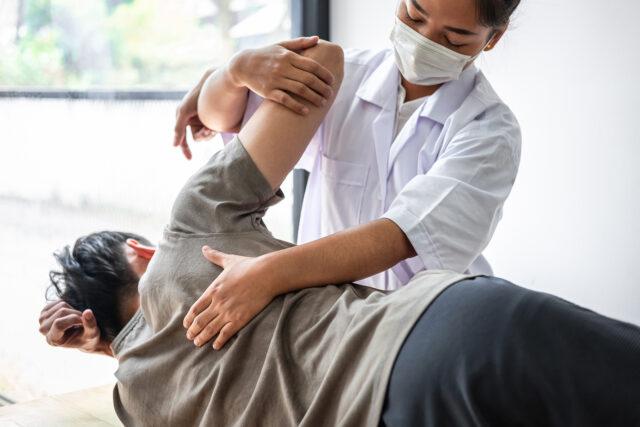 Massage Therapy: An Effective Complementary Treatment in Healthcare
Massage Therapy: An Effective Complementary Treatment in Healthcare
In recent years, the use of complementary and alternative medicine (CAM) in healthcare has increased in popularity. One such practice that has gained significant attention is massage therapy. Massage therapy is a hands-on technique that involves the manipulation of soft tissues in the body to promote relaxation, reduce stress, and alleviate pain. While once considered a luxury, massage therapy is now recognized as a viable complementary treatment in healthcare.
Massage therapy has been shown to have numerous benefits, both physical and psychological. Physically, massage therapy can help improve circulation, reduce muscle tension, and improve joint mobility. It can also aid in the healing process of injuries by increasing the flow of nutrients and oxygen to affected areas. Psychologically, massage therapy has been found to reduce anxiety, depression, and improve overall mood. It can also improve sleep quality and decrease symptoms of PTSD.
Massage therapy has been used as a complementary treatment for various health conditions, including chronic pain, fibromyalgia, arthritis, cancer-related fatigue, and more. In fact, massage therapy has been shown to be as effective as other CAM modalities, such as acupuncture and chiropractic, in treating chronic pain conditions. Additionally, massage therapy has been found to reduce the need for prescription pain medications, which can have harmful side effects.
Massage therapy is also being increasingly used in hospital settings. Studies have shown that massage therapy can help improve patient outcomes by reducing pain and anxiety levels, improving sleep quality, and reducing the length of hospital stays. In addition, massage therapy can provide healthcare professionals with a non-invasive, non-pharmacological treatment option to use in conjunction with other medical interventions.
In conclusion, massage therapy has become a valuable complementary treatment option in healthcare. Its benefits range from physical to psychological, and its use has been found to be effective in treating various health conditions. With the growing body of evidence supporting its use, massage therapy should be considered as a viable treatment option in healthcare settings. If you are experiencing any health concerns, consider talking to a healthcare professional about the benefits of massage therapy for your specific needs.
Contact us today to learn more about massage therapy and our massage program options.

Importance of Self-care as a Massage Therapist
 As a massage therapist, you spend your days helping others relax, de-stress, and ease their physical pain. However, in order to be an effective and healthy massage therapist, it’s important to prioritize your own self-care.
As a massage therapist, you spend your days helping others relax, de-stress, and ease their physical pain. However, in order to be an effective and healthy massage therapist, it’s important to prioritize your own self-care.
Self-care is not a luxury or indulgence; it’s an essential part of your job. Taking care of yourself physically, mentally, and emotionally will not only benefit you, but also your clients. Here are some reasons why self-care is so important for massage therapists:
- Preventing Burnout: Massage therapy can be physically demanding and emotionally draining. Without proper self-care, you may experience burnout, which can lead to exhaustion, apathy, and even physical illness. Taking breaks, getting enough sleep, and engaging in stress-relieving activities can help prevent burnout.
- Maintaining Physical Health: As a massage therapist, your body is your tool. If you don’t take care of it, you risk injury or chronic pain. Regular exercise, stretching, and maintaining good posture can help keep your body strong and healthy.
- Reducing Stress: Stress is a common issue for massage therapists, who may carry their clients’ emotions and physical tension with them. Engaging in activities that help you relax, such as meditation or yoga, can help you manage stress and improve your overall well-being.
- Enhancing Emotional Resilience: In addition to physical demands, massage therapy can also be emotionally taxing. You may encounter clients with difficult emotional issues, or simply feel drained by the constant emotional energy required for your work. Engaging in self-care activities such as journaling or talking to a therapist can help you build emotional resilience and stay balanced.
- Modeling Healthy Behaviors: As a healthcare provider, you are a role model for your clients. If you prioritize self-care and demonstrate healthy behaviors, your clients are more likely to do the same. This can lead to better health outcomes for both you and your clients.
So, what does self-care look like for a massage therapist? Here are some ideas:
- Schedule Regular Breaks: Take time between clients to stretch, rest, or engage in a relaxing activity.
- Maintain a Healthy Lifestyle: Exercise regularly, eat nutritious foods, and get enough sleep.
- Engage in Stress-Relieving Activities: Meditate, practice yoga, or take a relaxing bath.
- Seek Support: Talk to a therapist, join a support group, or find a mentor to help you manage the emotional demands of your work.
- Practice Self-Compassion: Remember that taking care of yourself is not selfish; it’s necessary. Treat yourself with kindness and understanding.
In conclusion, self-care is an essential part of being a successful and healthy massage therapist. By prioritizing your own well-being, you not only benefit yourself but also your clients. So, take the time to care for yourself – you deserve it!
Learn more about becoming a massage therapist and our massage school today!
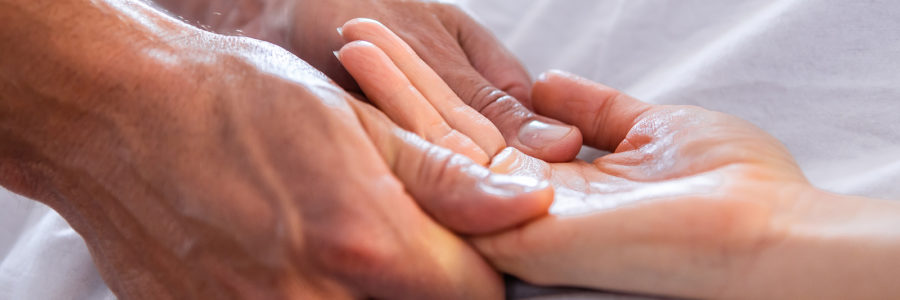
Massage & Carpal Tunnel
 Massage therapy is an effect treatment for carpal tunnel syndrome. Carpal tunnel syndrome is a condition caused by a pinched median nerve in the wrist. It’s associated with pain, tingling, numbness, or weakness in the hand and wrist. The carpal tunnel is a narrow canal in the wrist. The bottom and sides of the tunnel are formed by small bones called carpal bones. The top of the tunnel is a strong band of transverse carpal ligament, which holds the all components together.
Massage therapy is an effect treatment for carpal tunnel syndrome. Carpal tunnel syndrome is a condition caused by a pinched median nerve in the wrist. It’s associated with pain, tingling, numbness, or weakness in the hand and wrist. The carpal tunnel is a narrow canal in the wrist. The bottom and sides of the tunnel are formed by small bones called carpal bones. The top of the tunnel is a strong band of transverse carpal ligament, which holds the all components together.
Inside the tunnel are the median nerve and tendons. Tendons are rope-like structures that connect bones in the hand to muscles in the forearm. They also allow the thumb and fingers to bend. The median nerve runs down the arm and forearm and passes through the carpal tunnel into the palm of the hand. It provides sensation to the fingers (except the little finger). It also adds strength to some small muscles at the base of the thumb and index finger.
When the ligament thickens or tendons swell, the space in the tunnel decreases and the median nerve becomes compressed, exerting excessive pressure on the median nerve.
Symptoms of Carpal Tunnel Syndrome
Carpal tunnel syndrome symptoms include:
- Tingling, burning, or itching in the palm and fingers, especially the thumb, middle, and index fingers
- Occasional shock-like sensation that moves up into the fingers
- Pain and tingling traveling up the forearm toward the shoulder
- A swollen feeling in the fingers
- Decreased feeling in the fingertips
- Occasional hand weakness and loss of coordination
- Weakness and clumsiness in the hand, which may make it difficult to use the hand for small tasks such as writing, or buttoning a shirt
- Dropping objects due to numbness, weakness, or loss of proprioception
Symptoms of carpal tunnel syndrome begin suddenly or gradually- without a specific injury. In fact, many people find that symptoms come and go at first, and usually affected by excessive use of the hand. As the condition worsens and the pressure on the nerve becomes greater, symptoms may become more frequent or may persist for longer periods of time.
It’s common for people to experience nighttime symptoms because many sleep with their wrists bent. In the morning, a person may wake up with tingling or numbness in their hands. They may not notice the problem at all during the day, but symptoms often flare up when holding something with the wrist bent, such as when reading a book, using a phone, or driving. Many patients find that moving or shaking the hands can relieve the symptoms in the early stages of the condition.
Causes of Carpal Tunnel Syndrome
Carpal tunnel syndrome is often caused by a combination of factors that irritate or squeeze the median nerve. Possible contributing factors include:
- Activities that involve highly repetitive wrist or finger motions, like typing, farming, or knitting. Repetitive motions may aggravate the tendons in the wrist, causing swelling that exerts pressure on the nerve. This usually happens when the hands are lower than the wrists
- Trauma or injury to the wrist, such as sprain or fracture. This may break one or more of the carpal bones, cause swelling, or deform the small bones in the wrist
- Arthritis-related diseases, especially if there is swelling of the wrist joint, tendons, and tissues in the carpal tunnel
- Work that involves heavy use of the wrist
- Mechanical problems in the wrist joint
- Hormonal changes and fluid retention caused by pregnancy or menopause
- Repeated use of vibrating hand tools or instruments that require forceful gripping and put pressure at the base of the palm
- Heredity
- Health conditions such as diabetes, amyloidosis, kidney failure, lymphedema, menopause, an underactive thyroid gland, or an overactive pituitary gland
Massage Therapy for Carpal Tunnel Syndrome
Massage therapy is a non-invasive and effective treatment for carpal tunnel syndrome. It helps relieve the symptoms of carpal tunnel syndrome by reducing swelling in the muscles caused by damage or overextension in the work environment. It also works by breaking down scar tissue, and softening and lengthening muscles and fascia of the shoulder, neck, elbow, wrist, hand, forearm, and upper arm.
During a massage session, the therapist will use deep tissue work to stimulate trigger points, release adhesions, and reduce the tension in the soft tissues of the arm, shoulder, hand, and wrist. This involves bringing the arm and shoulder out of internal rotation or incorporating myofascial cupping to reduce muscle tension.
By massaging and stretching tendons in the arm and wrist, a massage therapist can help restore full flexibility of the arm and reduce the pressure the tendons are putting on the median nerve. This in turn reduces the inflammation, pain, and numbness associated with carpal tunnel syndrome.
The number of massage sessions it takes for a patient with carpal tunnel syndrome to find relief will vary depending on how severe the problem is. Most clients experience some level of relief after the first session but for others, it may take three to five sessions or more to get long-term results.
Learn Advanced Massage Therapy Techniques from the Experts
While massage therapy is effective in treating carpal tunnel syndrome, it must be done right to get the expected results. If you’d like to expand your knowledge and skills in massage therapy, enroll in one of Seattle’s best massage therapy schools to learn therapeutic massage therapy protocols. You’ll learn massage theories and practices, anatomy and physiology, pathology, kinesiology, and much more. This will equip you with the skills you’ll need to provide care for individuals who’ve been affected by carpal tunnel syndrome and other similar ailments.
Another option for massage therapy schools in Seattle is our sister school Seattle Clinical Massage School
Contact us today to speak with one of our enrollment specialists.

Anterior Cruciate Ligament Tears
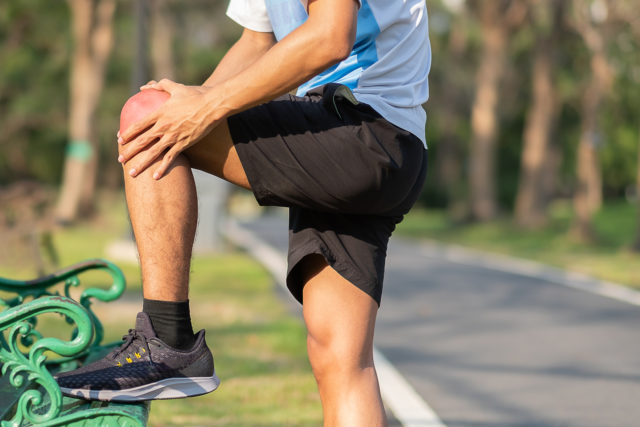 An Anterior Cruciate Ligament (ACL) tear is an injury impacting major ligaments in the knee. It is a key concern for many sports enthusiasts because such ACL tears occur mostly during sports activities that involve jumping, landing, sudden stops, or changes in direction.
An Anterior Cruciate Ligament (ACL) tear is an injury impacting major ligaments in the knee. It is a key concern for many sports enthusiasts because such ACL tears occur mostly during sports activities that involve jumping, landing, sudden stops, or changes in direction.
Examples of such sports include football, basketball, soccer, or downhill skiing. Also, these ruptures are more common in women than in men because of the difference in anatomy.
Once you sustain an ACL injury, you might require surgery, but that depends on factors like your activity level and severity of damage. With advancements in the field of reconstruction surgery, athletes can benefit from hamstring grafts, patellar tendon graft along with allografts. These prove effective in restoring both function and strength to the injured knee.
Even so, the ability of an athlete to go back to an active lifestyle successfully/full recovery after ACL reconstruction depends on the absence of three prevalent complications.
- Quadriceps weakness
- Flexion contracture (of the muscle group)
- Patellofemoral pain syndrome (PFPS)
Many physicians will use the patellofemoral pain syndrome as a “catch-all” diagnosis for the myriad of symptoms associated with anterior knee pain, especially after ACL reconstruction.
Signs and Symptoms of Anterior Cruciate Ligament Rupture
Once you sustain the injury, you will hear a popping sound from your knee. Other common symptoms include:
- Pain and swelling
- Loss of full range motion
- Discomfort when walking
- Joint tenderness
- Inability to bear leg weight even with minimal pain
- Feeling of instability
Causes
Several movements can cause an anterior cruciate ligament tear. These include:
- Slowing down during a run
- Incorrectly landing from a jump
- Rapidly changing direction
- Stopping suddenly
- Direct contact or collision like during a tackle
- When a knee is twisted or bent backward
While sport accidents are the most common causes of ACL injuries, you can sustain an ACL tear from missing a step in a staircase, falling off a ladder, or being in a car accident.
Risk factors
There are several risk factors for an ACL injury, and they include:
- Gender
- Active involvement in sports like football, gymnastics, basketball, soccer, and downhill skiing
- Using defective sport equipment like ski bindings
- Wearing ill-fitting sportswear
- Having a history of an ACL tear
Outcome and treatment
When you experience an ACL injury, you might not be able to walk correctly. An ACL injury causes a partial or complete tear of tissue and is usually very painful. Once you visit a doctor, they will recommend treatment based on the severity of the injury. Treatment options include first aid, medications, physical therapy, or surgery.
Massage Therapy for Anterior Cruciate Ligament Tear
One aspect of physical therapy for ACL is massage. Therapeutic massage therapy has the following benefits:
- Reduce pain and swelling (inflammation)
- Increase blood circulation and joint mobility
- Accelerate the healing process
- Lower the aggregation of scar tissue forming around the site of the injury
During a therapeutic massage, therapists target surrounding muscles, joints, or other specific structures to reduce strain. And once you’ve achieved success in ensuring they’re relaxed, a physician can then start restoring them to their proper alignment and flexibility.
Massage therapy is considered a safe and effective complementary treatment for many muscle and joint problems—including ACL. The type of massage and the number of sessions you will require will depend on your injury. At the end of all of your sessions, you will have regained full range of motion without any pain.
While massage therapy is effective in treating ACL, it must be done correctly for maximum results. Ensure you get your massage therapy from a professional therapist. If you would like to learn more about massage therapy or attend massage school, call us today. Also contact the Northwest Academy admissions department for any massage related questions.

Massage Therapy and Cardiovascular Health
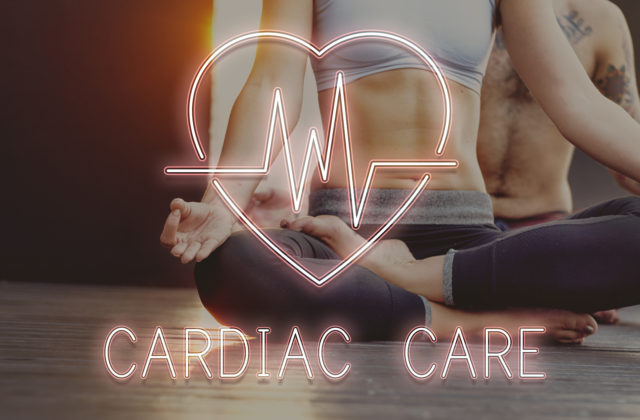
The Centers for Disease Control and Prevention reports that 1 in every 4 American deaths is directly related to heart disease. Conditions like coronary heart disease, cardiomyopathy, and other cardiovascular ailments kill over 600,000 people each year.
Massage therapy offers clients with cardiovascular issues many benefits that can help them improve their cardiovascular health and reduce their risk of stroke and heart attack.
What Contributes to Cardiovascular Disease?
There are three major factors that contribute to the development of heart disease.
These conditions are caused by structural abnormalities present at the time of birth.
- Viral infections
Myocarditis is damage to the heart due to certain viruses.
- Lifestyle Choices
Daily habits are currently the biggest contributor to heart disease.
- Smoking
- Poor diet
- Lack of exercise
- Diabetes
- Obesity
- Chronic stress
How Stress and Pain Affect the Heart
When a person experiences a painful or stressful event, the brain releases the hormones cortisol and adrenaline. These chemicals prepare the body to fight or run away from dangerous situations. The body responds by tensing muscles, shortening the breath, and increasing the heart rate.
This response, however, is only supposed to be short-term. Too much of these hormones can fatigue the body, especially the cardiovascular system. Without relief, long-term stress or chronic pain will weaken the heart muscle. Combined with less-than-healthy lifestyle choices, these factors can lead to heart disease.
How Massage Supports Cardiovascular Health
Massage therapy helps patients with cardiac issues address some of the factors that may be contributing to their condition. In conjunction with doctor-prescribed protocols, massage also helps patients manage some of the side effects of treatment.
- Induce states of physical and mental relaxation, which can help alleviate the effects of chronic stress and anxiety on the whole body.
- Loosen tight muscles and increase blood flow, which improves overall circulation and decreases the chances of stroke-causing clots.
- Alleviate chronic pain, which helps interrupt the brain’s “fight or flight” response.
- Reduce anxiety before or after surgical procedures.
Some common side effects from traditional drug therapies used to treat heart disease can be treated effectively with massage.
- Abdominal pain
- Headache
- Muscle aches
Precautions
While massage is generally safe and effective, there are some cautions to keep in mind when working with cardiac patients.
- Those on blood thinning drugs should avoid vigorous or deep tissue techniques, as these can cause bruising, inflammation, or tissue damage.
- Massage is not recommended for those with low blood pressure.
- Patients with a history of blood clots should avoid Swedish techniques.
- Therapists should avoid manipulating the area around pacemakers, stents, or other implanted devices.
- Patients with signs of congestive heart failure should start with short massages, and slowly work up to longer sessions, as tolerated.
Recent studies also who that consistent massage therapy can reduce blood pressure and heart rate. High blood pressure and rate are major factors in heart attack risk.
Patients who combine traditional medical treatments with massage techniques experience an increase in energy, physical relaxation, and mental focus. This can help them recover faster from surgical procedures, or avoid major cardiovascular events.
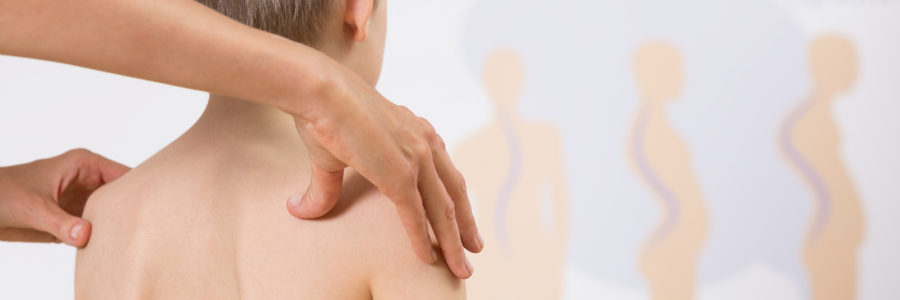
Scoliosis and Massage Therapy
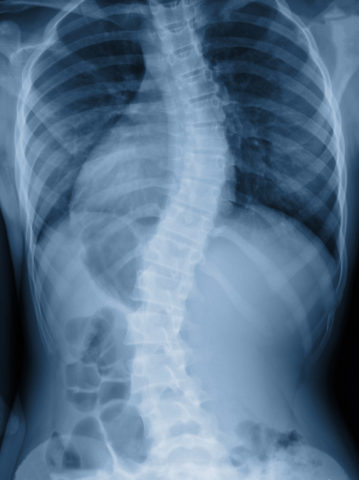
Over 30% of the American population has some form of scoliosis. You may have already helped clients who suffer from this condition in your regular bodywork or therapy practice. While traditional treatments vary, massage therapy is a safe addition to any client’s treatment plan.
What is Scoliosis?
Scoliosis is a condition of the spine. It causes the spine to curve left or right into a distinctive “S” or “C” shape. The spine compresses. This compression throws off the patient’s balance, and can contribute to a variety of health complications.
- Sore, painful muscles
- Difficult, stiff movement
- Hunch back
- Lung and heart problems
- Numbness
- Muscle weakness
If left untreated, the spine will continue to curve. This can lead to nerve, joint, and ligaments damage, as well as permanent disability.
What Causes Scoliosis?
Most scoliosis cases are classified as idiopathic. That means there is no known cause.
For about 20% of cases, doctors can point to a definite root condition. These cases are classified as structural or non-structural.
Structural scoliosis causes the spine to bend into a rigid curve that cannot be corrected. It is caused by underlying conditions like
- Cerebral palsy
- Muscular dystrophy
- Birth defects
- Tumors
- Infections
- Marfan’s or Down Syndrome, or similar genetic disorders
The spine of a patient suffering from non-structural scoliosis works normally. The characteristic curve is caused by injury, weakness, or illness of surrounding body parts. When the cause is treated, non-structural scoliosis generally disappears.
Scoliosis can also be developed while still in the womb. Congenital damage to growing vertebrae can cause the spine to curve, not divide properly, or not grow completely. Some patients with congenital scoliosis are not diagnosed until they are between the ages of 10 and 15. During this time, many children go through several growth spurts, which makes structural malformations more noticeable.
Degenerative scoliosis is caused by the wearing of joints and discs in adults. Their damaged joints cause the surrounding muscles to strain, which leads to a curved spine.
Massage Therapy for Scoliosis Patients
While scoliosis massage cannot correct curved or twisted bones, including the spine, it can help clients reduce pain and increase mobility.
- Massage relaxes muscles that are pulled out of place by shifted bone structures, which can significantly calm tight, uncomfortable sensations.
- Deep tissue techniques increase blood circulation and break up scar tissues, which makes it easier for patients to move freely.
- Patients who receive massage prior to chiropractic or neuromuscular therapies report better results from these treatments.
- Massage is known to soothe the mind as well as the body. A decrease in mental stress is linked to a better ability to deal with chronic pain issues.
Early and regular scoliosis massage therapy, in conjunction with standard medical treatments like exercise and the use of a brace, can help scoliosis patients avoid complicated surgeries.
There is no cure for scoliosis. However, it is highly manageable. The goal of treatment is to reduce the progression of spine curvature, reduce discomfort, and restore or improve mobility. Scoliosis Massage therapy can help your client achieve these goals more quickly than with standard treatments alone.





